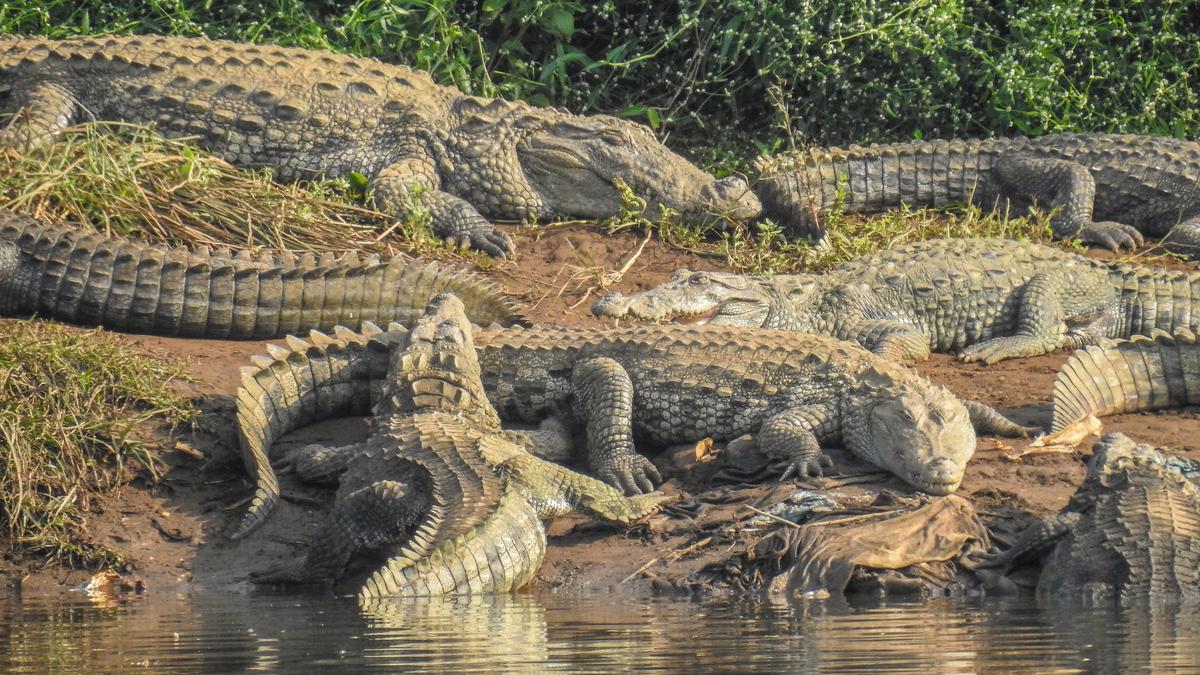
Crocodiles yield to flower power, study finds
The Hindu
Muggers of Savitri River in Maharashtra attracted to marigolds, often basking, floating, or lying in contact. Zoologists found they ignored or attacked other objects, but lay near marigolds. Petals of marigolds have antimicrobial properties, suggesting contact could alleviate bacterial load.
Flowers of a specific kind enchant the mugger or Indian marsh crocodile, “underestimated” like all other reptiles because of the small size and simple structure of their brain, a new study has found.
Observing the muggers (Crocodylus palustris) of Savitri River in Maharashtra from 2014 to May 2023, zoologists Utkarsh M. Chavan and Manoj R. Borkar found that the crocodiles were attracted to marigolds, often basking, floating, or lying in close contact with garlands discarded from offerings to corpses brought to the riverbank for cremation.
The former is associated with the Zoology Department in Mumbai’s Hazarimal Somani College and the latter with the same department in Goa’s Carmel College of Arts, Science and Commerce for Women.
The zoologists conducted their study at the Kemburli, Mohalla, Dadli, and Smashaan (cremation ground) stretches of the river in Raigad district’s Mahad town. Their findings were published in the August issue of the Journal of Threatened Taxa.
Various species of crocodiles are known to use floating debris in the water as play objects and show interest in them. There have been reports of captive Cuban crocodiles and Western African dwarf crocodiles playing with pink bougainvillaea flowers, picking them up, pushing them around, and carrying them in the teeth or the tip of the snout.
“Though play behaviour of crocodiles was not the focus of this investigation, it was regularly observed that the muggers in Smashaan region floated, basked, and lay in the vicinity of yellow or orange marigold flowers (Tagetes erecta),” the study said while noting the muggers ignored or attacked other floating objects.
The marigold flower garlands end up in the Smashaan stretch of the river from offerings to the corpses brought for cremation.

Beyond Hyderabad is building a thriving community for arts, music, trekking and heritage enthusiasts
Beyond Hyderabad (BH) offers diverse experiences through curated events celebrating art, music, food, and heritage in Hyderabad.












